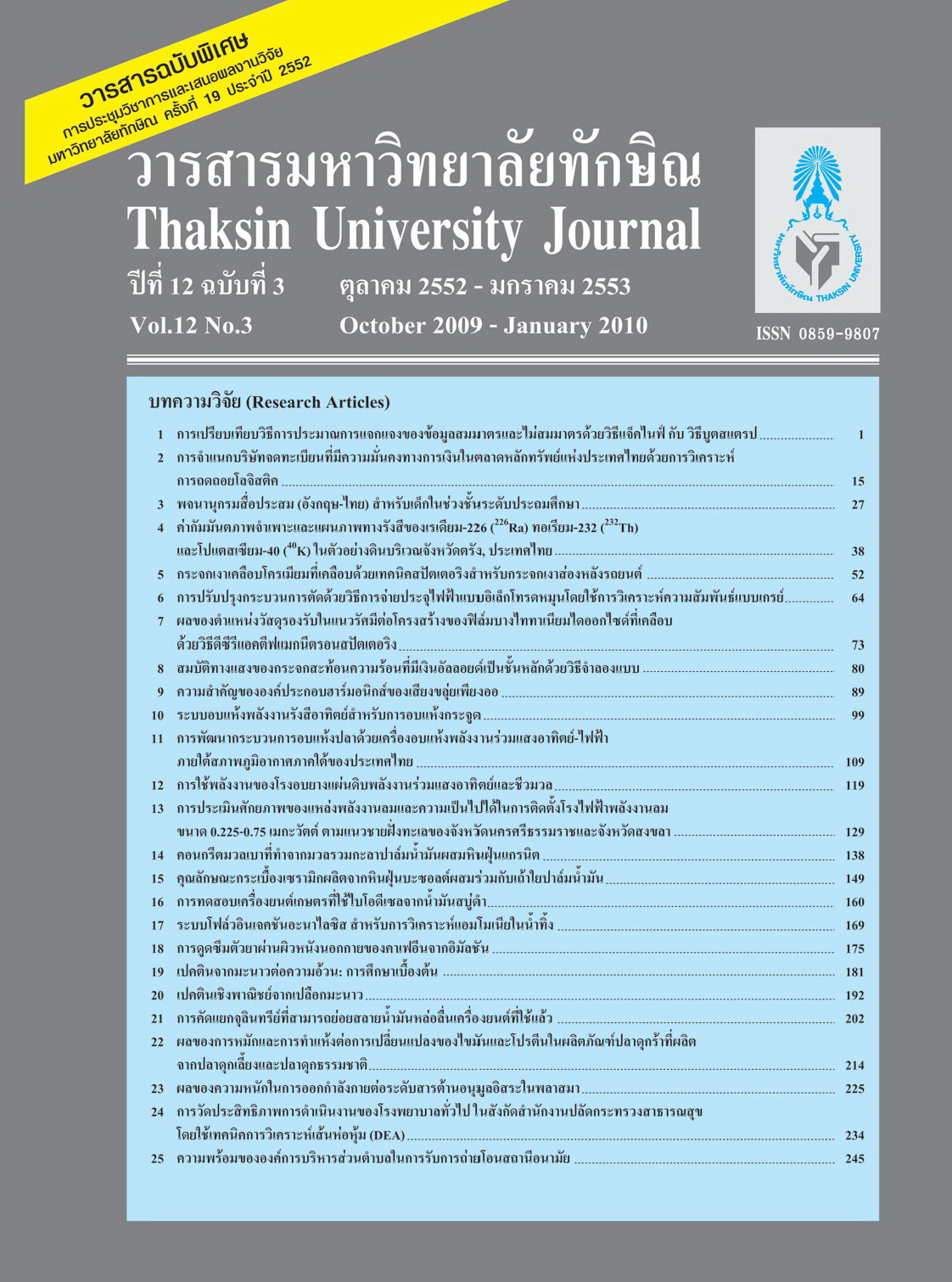เปคตินจากมะนาวต่อความอ้วน: การศึกษาเบื้องต้น
Main Article Content
Abstract
การวิจัยนี้ศึกษาถึงผลของเปคตินที่สกัดจากมะนาวต่อความอ้วนของหนูถีบจักรเพศเมียกลุ่มทดลองจำนวน 10 ตัว น้ำหนักตัว 25.70 ±2.87 กรัม ที่ให้กินอาหารที่ประกอบ ด้วยเปคตินจากเปลือกเนื้อในมะนาวในรูปแบบเม็ดเพลเลต ปริมาณตัวละ 10 กรัม/วัน และอาหารปกติ เป็นเวลา 45 วัน โดยเปรียบเทียบกับหนูกลุ่มควบคุมจำนวน 10 ตัว น้ำหนักตัว 26.20 ± 0.92 กรัม ที่กินอาหารปกติ และไม่กินอาหารที่มีเปคตินเป็นส่วนประกอบ พบว่าค่าดัชนีมวลกายของหนูถีบจักรที่ ให้กินอาหารที่ประกอบด้วยเปคตินจากมะนาว จะมีค่าลดลง และไม่เกิดความแตกต่างของอุณหภูมิระหว่างวันที่ทดลอง และวันที่เริ่มการทดลอง ส่วนการใช้แคลอรี่ของหนูถีบจักรกลุ่มทดลองทั้งก่อนและหลังกินอาหารมีค่าไม่แตกต่างกัน เช่นเดียวกับการใช้แคลอรีของหนูถีบจักรกลุ่มควบคุม และค่าคลอเลสเตอรอลทั้งหมด และค่าไตรกลีเซอไรด์ทั้งหมด ในเลือดของหนูถีบจักรกลุ่มทดลองจะมีค่าน้อยกว่าหนูถีบจักรกลุ่มควบคุม นอกจากนี้พลังงานจากการเผาผลาญสาร อาหารเปคตินโดยตรงมีค่า 2.72 ± 0.18 cal/g ของเปคติน จึงสรุปผลว่าสารเปคตินมีศักยภาพ สามารถนำไปใช้ ในการลดความอ้วนของหนูถีบจักรได้
The study on effect of pectin extracted from lime on obesity was made on experimental group of 10 female Wister mice with 25.70 ±2.87 g. body weight; each was provided 10 g/day of food with pectin extracted from inner linctuses of lime and ordinary mice food for 45 days. Comparing with control group of 10 female mice with 26.20 ± 0.92 g. weight; each was provided 10 g/day of ordinary mice food without pectin food, it was found that BMI (Body Mass Index) of the experimental group was less, and no body temperature difference between the experimental and initial dates of the experimental group. The calorie expenditure of the experimental group before and after the meal was not different, the same as the control group’s. As well as Total cholesterol and total triglyceride in the experimental group’s blood was lower than the control group. In addition, the energy from directed combustion of pectin was 2.72 ± 0.18 cal./g. Thus it was concluded that pectin could potentially be utilized as anti-obesity in Wister mice.


